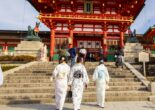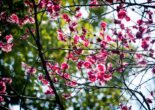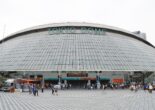Explore Mejiro: A Yamanote Line stop with rich history, art, and ukiyo-e prints.
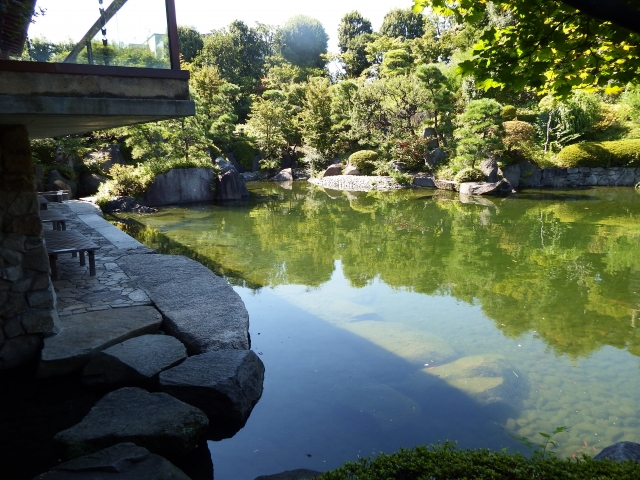
An Overlooked Stop on the Yamanote Line
The Yamanote Line station between Ikebukuro and Takadanobaba may not seem to amount to much at the first glance. You may even wonder why there is a station there at all. The preceding and following stations are so close that from the end of the platform, you can see them. The train hardly has time to accelerate before it has to brake again. Does the name Mejiro ring a bell?
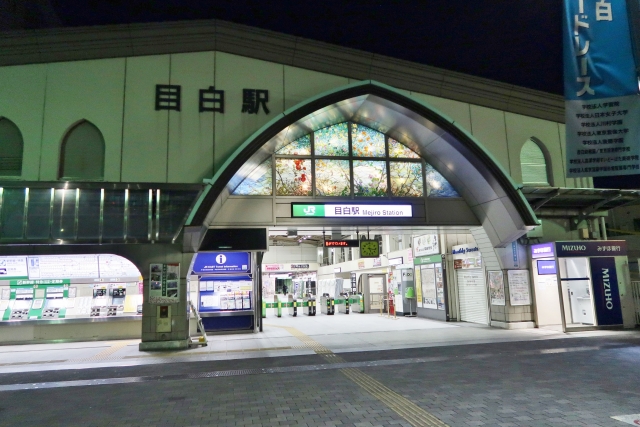
To read more interesting articles about other places on the Yamanote Line, check out our blog about Tabata!
This station was not founded on a whim. Mejiro has a long history. The name may sound similar to Meguro, which is no coincidence. While Meguro is named for the black eyes (me-guro 目黒) of a statue raised to protect the city by Buddhist priests in the early days of Edo, Mejiro (me-jiro 目白) is named for the white eyes of a similar protective statue. There were six around the western edge of the city, but these two are the only ones to have left such a footprint in modern Tokyo.
This tells you that in the Edo era, this was the edge of the city; and the fact that the Yamanote line passes through corroborates it, as it runs roughly where the edge of the city was until it started to expand and grow after the Meji restoration.

Mejiro, at the outer edge of central Edo, was part of the ”green ring” around the center of the city. This is also why a protective statue was placed here on the initiative of Tokugawa Ieyasu, to ward off evil spirits that might be poised to invade the newly founded city. Residences of the feudal lords (who had to leave their families as hostage when they went home to their provinces) and villas the retainers of the shogun sprawled in lush surroundings, while common people lived in small apartments stacked up along the back alleys.
The area also has more than its fair share of temples, although mostly on the inside of the Yamanote line tracks.
While the temples are still there and offer a reminder of old Edo, the palaces were confiscated when the feudal system ended. There are a few gardens to remind about them, but not much else – except for places like the great zelkova tree from the Konoe mansion, a few blocks away from Mejiro station to the southeast.
Tokyo Used to Be Green
A few blocks to the north is another reminder of how green Tokyo used to be. On the site of the Tokugawa mansion (the branch of the Tokugawa family from the origin in Osaki) is a sprawling complex of villas, rented out to diplomats, managers, and other high-powered individuals. It is a private compound and you can walk around there; but the original mansion, which was an impressive building with its own movie theater, is long gone.
You can get an idea about what its surroundings may have been like in the nearby Mejiro Garden, a small garden with a koi pond and several traditional buildings used for events and gatherings. It opened already in 1900, but like many places in Tokyo it was almost completely destroyed during the Second World War – and lovingly restored afterwards.
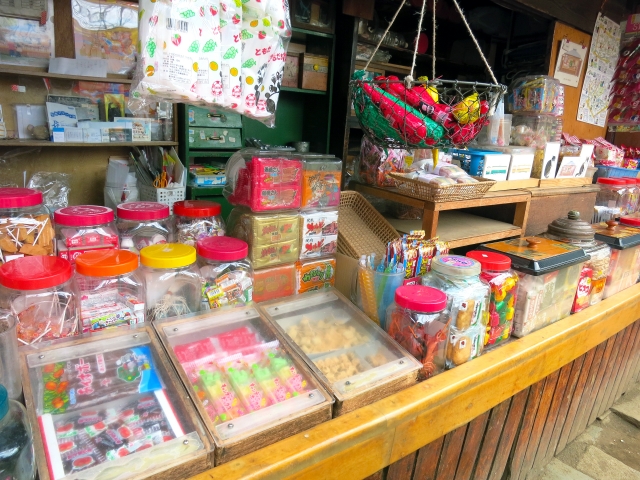
One of the buildings in Mejiro Garden is named for a children’s magazine that used to be published here. The area has a rich art and publishing tradition, especially as home to manga artists.
Many of them used to live in Tokiwa-so, a no-frills residential building that survived WWII, typical of the time with cold water only, and no baths. Here, manga artists congregated (in the cheap housing), and the established artists hired their younger counterparts as assistants, giving them both a means of living, a top education in drawing manga, and an opportunity to get their own work in front of the editors at the publishing houses.
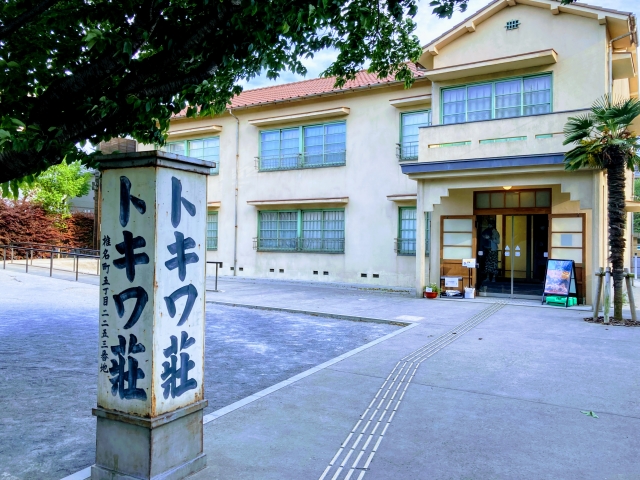
Tokiwa-so was torn down in the 1980’s, but the city recreated the apartment of Osamu Tezuka, complete with the mold on the walls, in a museum built near the original location. If you want to understand how manga are venerated in Japanese society, or love Atom Boy or Black Jack, this is a must-visit and worth the walk from Meguro station (which takes about 20-30 minutes).
Paintings Less Popular than Manga
Manga artists are not the only artists venerated in Japan, although their popularity widely exceeds what any painter except Hokusai is able to inspire. Mejiro has its share of artist ateliers turned to museums: The home and studio of painter Saeki Yuzo is on the way from Mejiro station to Tokiwa-so, giving an interesting insight in the life of a Japanese artist in the beginning of the 20th century; and closer to the station is the residence and studio of Nakamura Tsune, another early 20th century painter.
Both artist homes show a Tokyo that no longer exists, with small houses spread out in sprawling gardens. All of Mejiro used to be like this, until condominium complexes encroached on the open areas; there are still leafy esplanades in this part of this part of the city, making a walk between the small stores quite pleasant.
Not far from the studio of Nakamure Tsune is another gem for art lovers which even in itself is a reason to get off the Yamanote line in Mejiro.
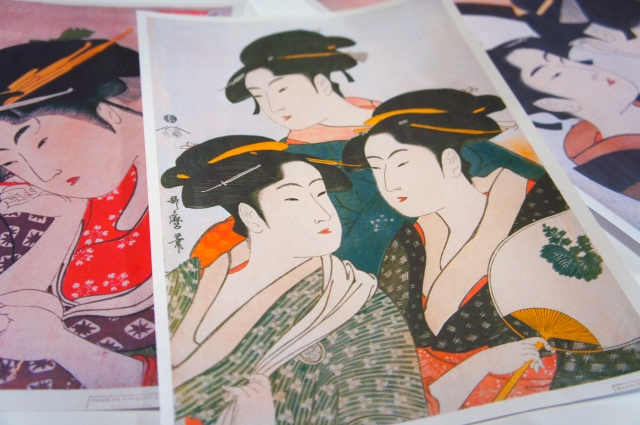
The Adachi Institute of Woodwork Prints is the only place in Japan today that makes ukiyo-e woodcut prints using the original techniques – and the original blocks (or in some cases, copies of the originals). The institute both makes prints from the original blocks of the old great artists, and encourages new artists to use woodblock printing in their art – usually with conventional expressions, but sometimes advancing the art. The yellow tone you may be used to from woodprint exhibitions is absent; that comes from the paper ageing. The new paper used in these prints makes the colors feel fresh and glowing; hang one on a wall and it changes the entire room.
The museum shop also features the woodblock prints. You can buy prints done from the same wooden blocks that Hokusai would have used, which makes for a truly great souvenir. Skip the frame, it is easier to transport rolled up. But they do not come cheap.
Stay tuned for more exciting content about other interesting places like this! Follow us on our social media platforms and check out our blog regularly to stay updated on the latest news, trends, and insider stories from Japan. Don’t miss out on future updates—sign up for our newsletter for exclusive content delivered straight to your inbox!
Related Articles
Warning: Undefined array key "sfsi_threadsIcon_order" in /home/veremosglobal/tokyoroomfinder.com/public_html/blog/wp-content/plugins/ultimate-social-media-icons/libs/controllers/sfsi_frontpopUp.php on line 165
Warning: Undefined array key "sfsi_blueskyIcon_order" in /home/veremosglobal/tokyoroomfinder.com/public_html/blog/wp-content/plugins/ultimate-social-media-icons/libs/controllers/sfsi_frontpopUp.php on line 170
Warning: Undefined array key "sfsi_bluesky_display" in /home/veremosglobal/tokyoroomfinder.com/public_html/blog/wp-content/plugins/ultimate-social-media-icons/libs/controllers/sfsi_frontpopUp.php on line 266

